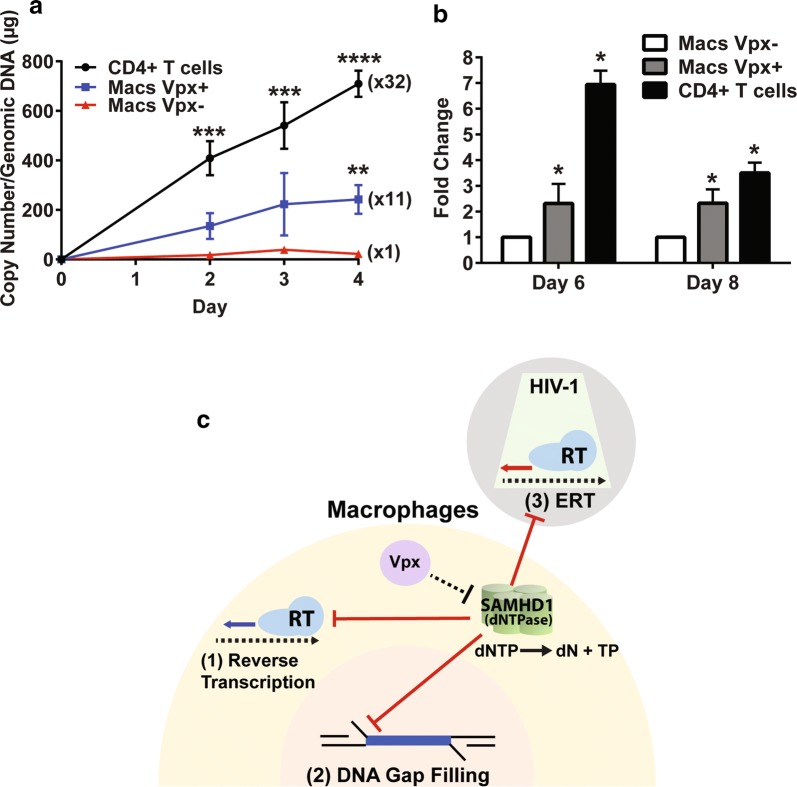Fig. 5.
Reverse transcription kinetics and Infectivity comparisons of HIV-1 89.6 produced from macrophages treated with Vpx (−) VLPs and Vpx (+) VLPs, and activated CD4+ T cells, and three steps of HIV-1 replication cycle restricted by host SAMHD1 protein. Fresh macrophages from healthy donors were infected in triplicates with the HIV-1 89.6 viruses collected at day 8 from Vpx (−) VLP treated macrophages, Vpx (+) VLP treated macrophages (from Fig. 3) or collected at day 3 from the activated CD4+ T cells (see Fig. 2). a Reverse transcription kinetics of these three viruses were determined by measuring the copy numbers of 2LTR circle DNAs with the cellular genomic DNAs isolated from the infected cells. b Infectivity of the three different viruses was determined by measuring the viral RNA copy numbers (early RT products) at days 6 and 8 post infection. c Three steps of HIV-1 replication cycle restricted by host SAMHD1 in macrophages. SAMHD1 suppression against the three steps of HIV-1 cycle that consume dNTPs is marked as red lines. HIV-1 particles: grey, macrophage cytoplasm: yellow, and macrophages nucleus: pink. Reverse transcribed products by RT are marked as thick arrows. Red arrow: ERT product within the core (green) of produced viral particle, Blue arrow: reverse transcribed product in cytoplasm post infection. SAMHD1 tetramer depletes cellular dNTPs by hydrolyzing dNTP to dN and triphosphate (TP). Vpx (purple) counteracts SAMHD1. The data are the mean of three independent experiments with qPCR performed in duplicate, and error bars represent the standard error of the mean. *P < 0.05; **P < 0.01; ***P < 0.001; ****P < 0.0001

